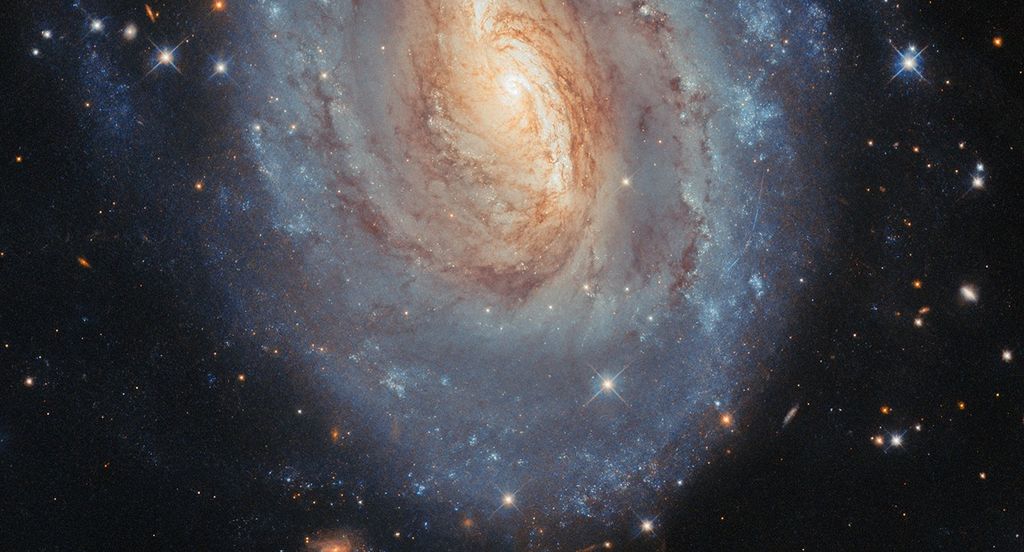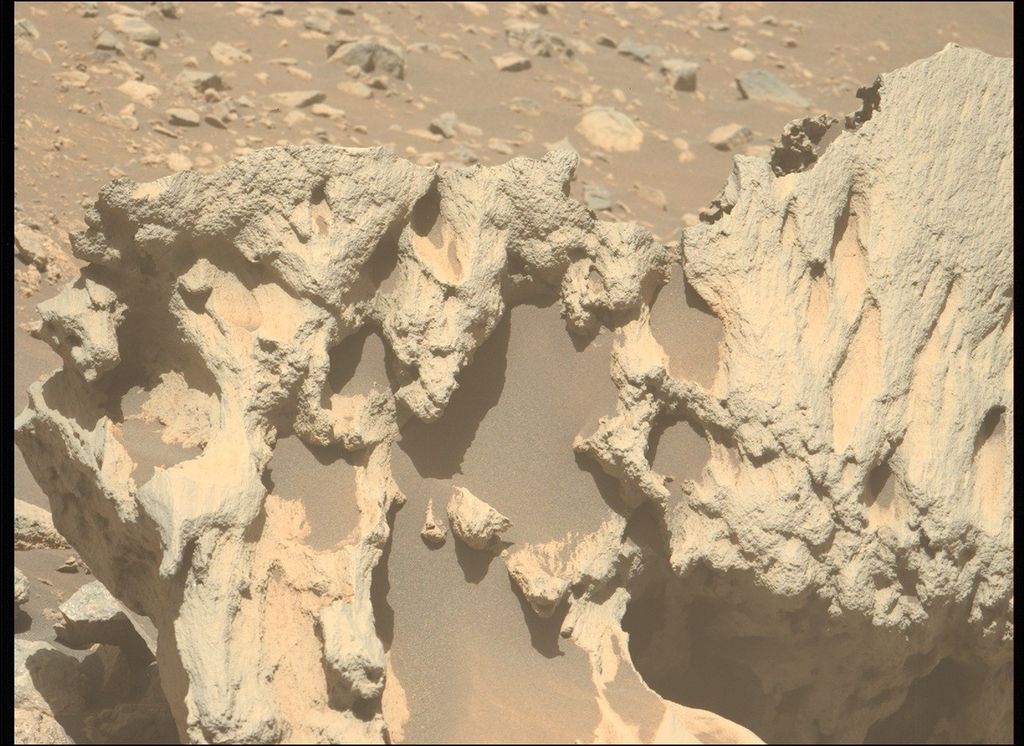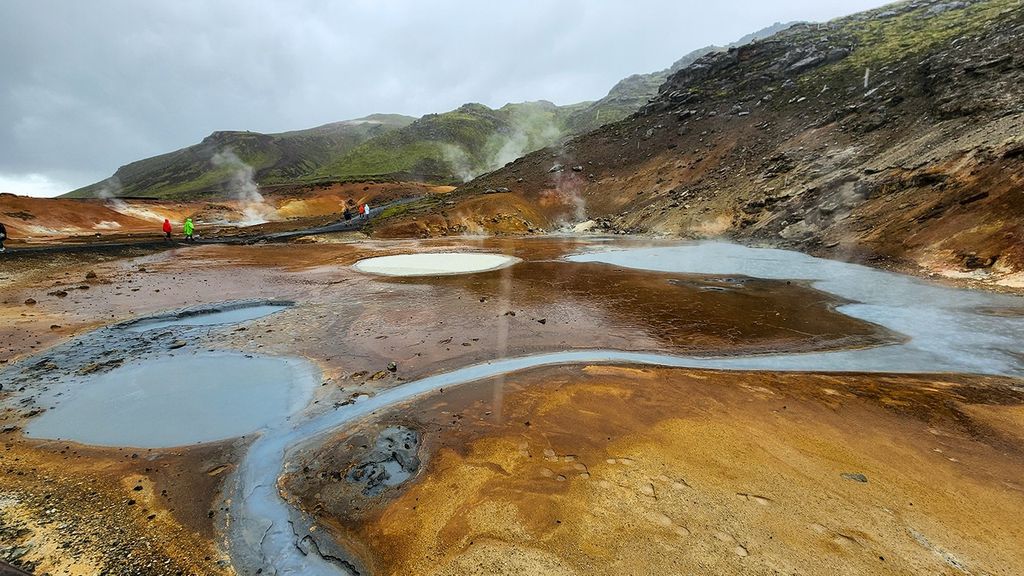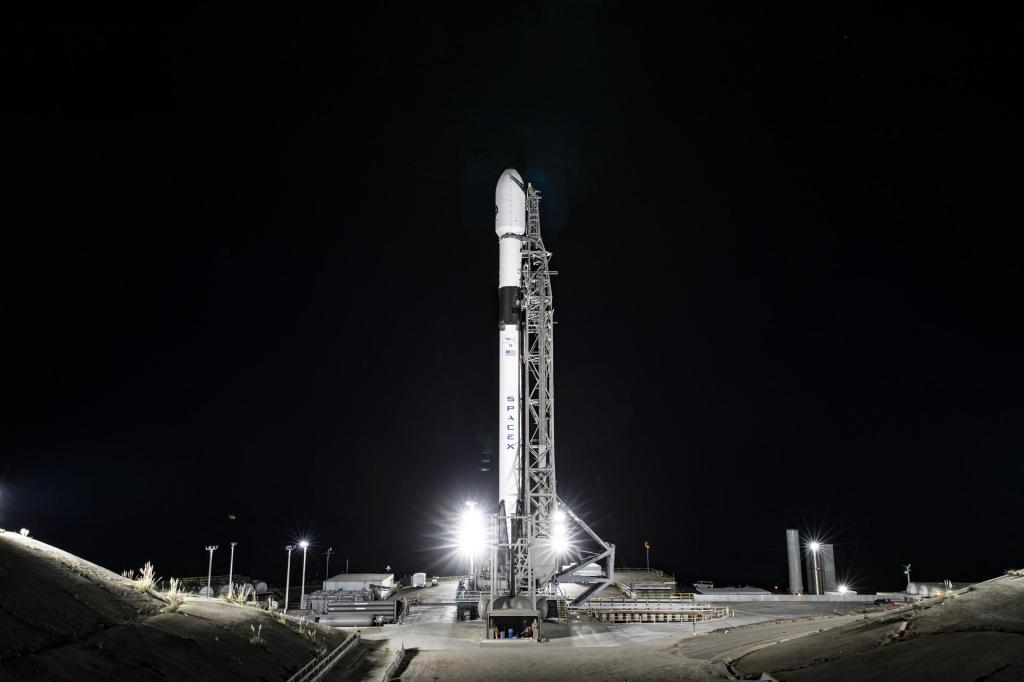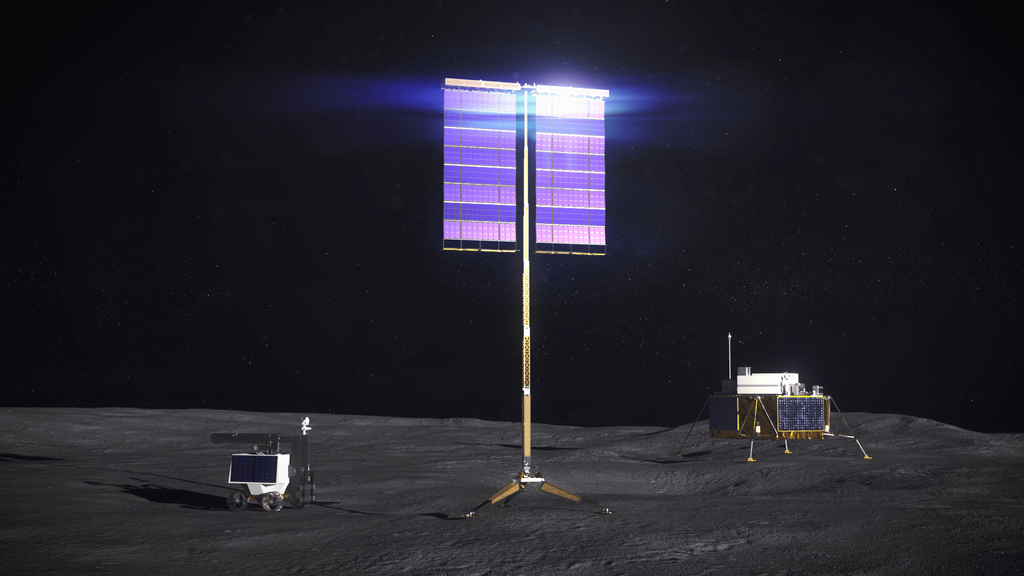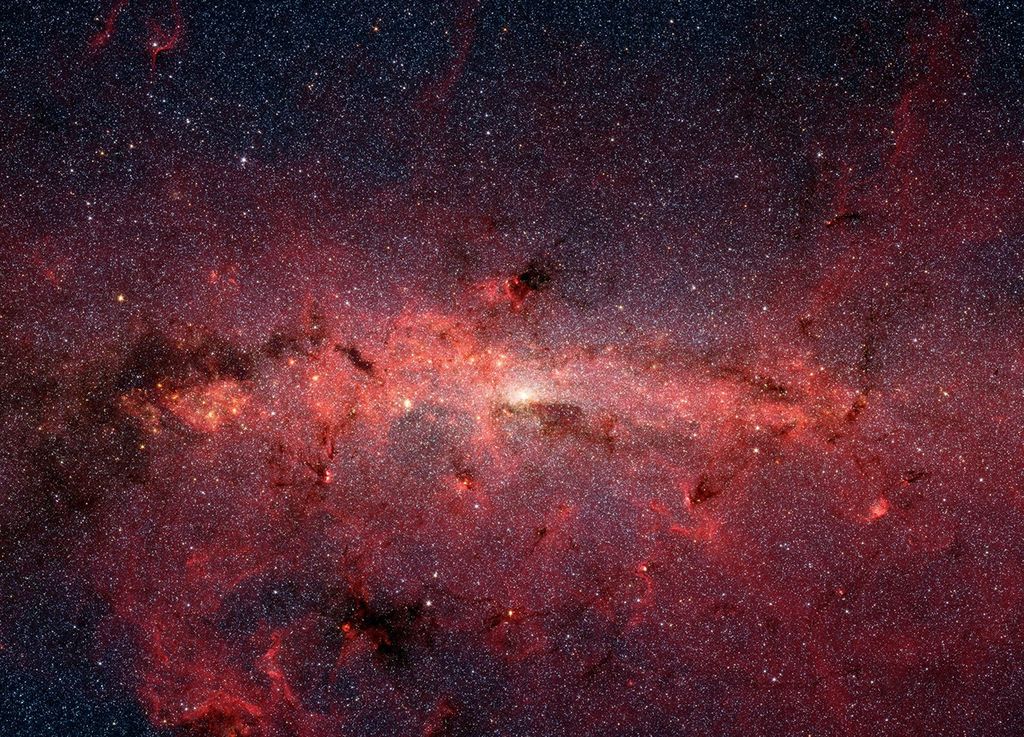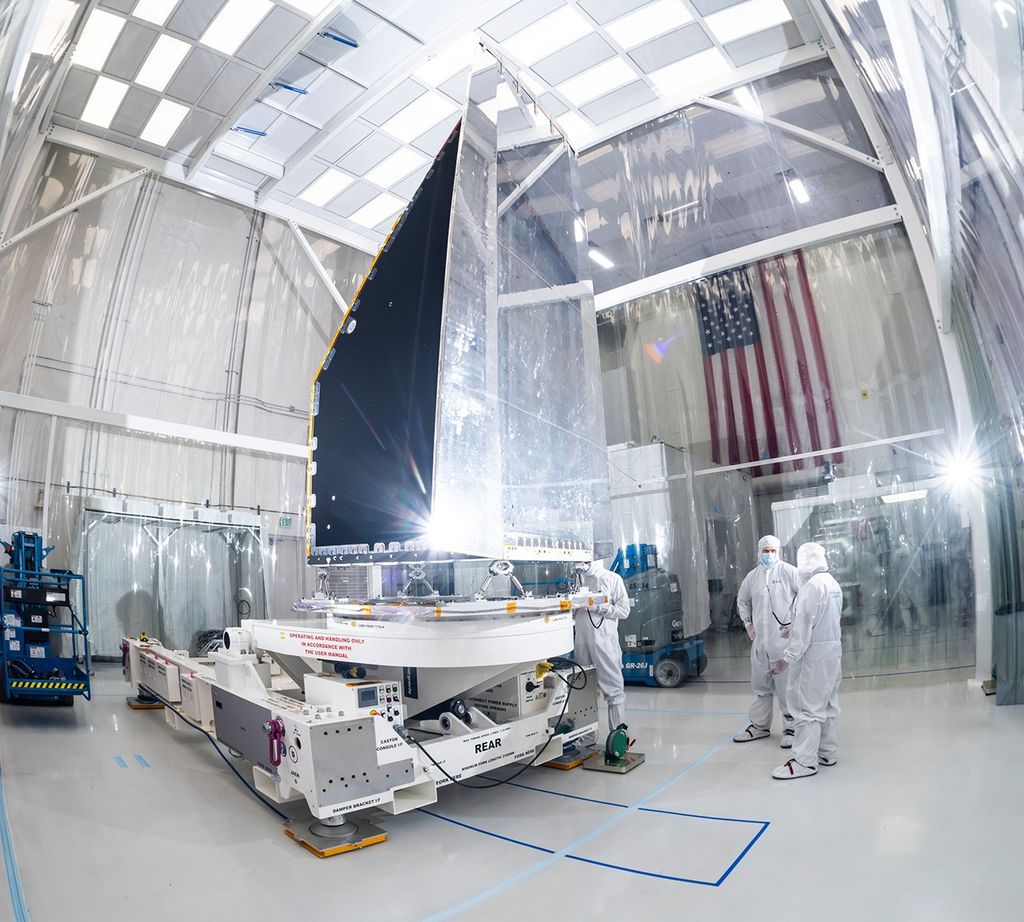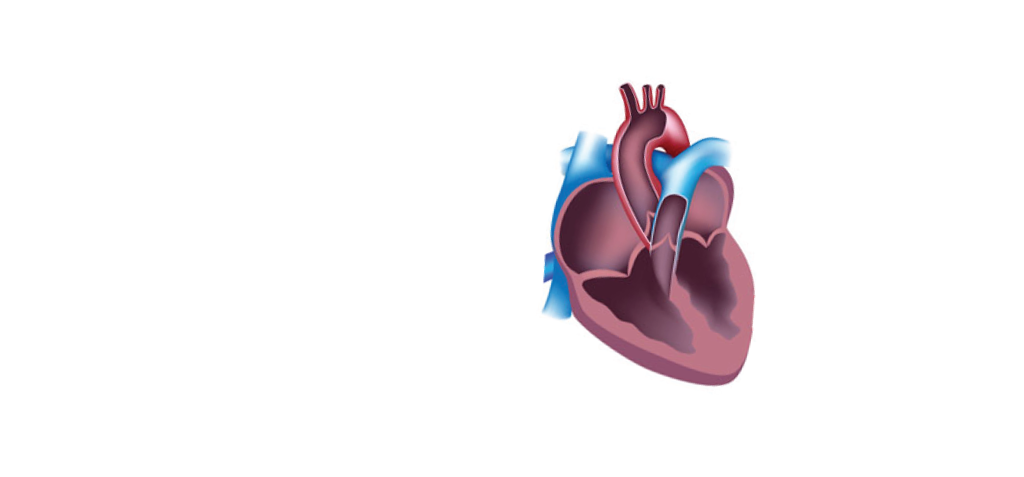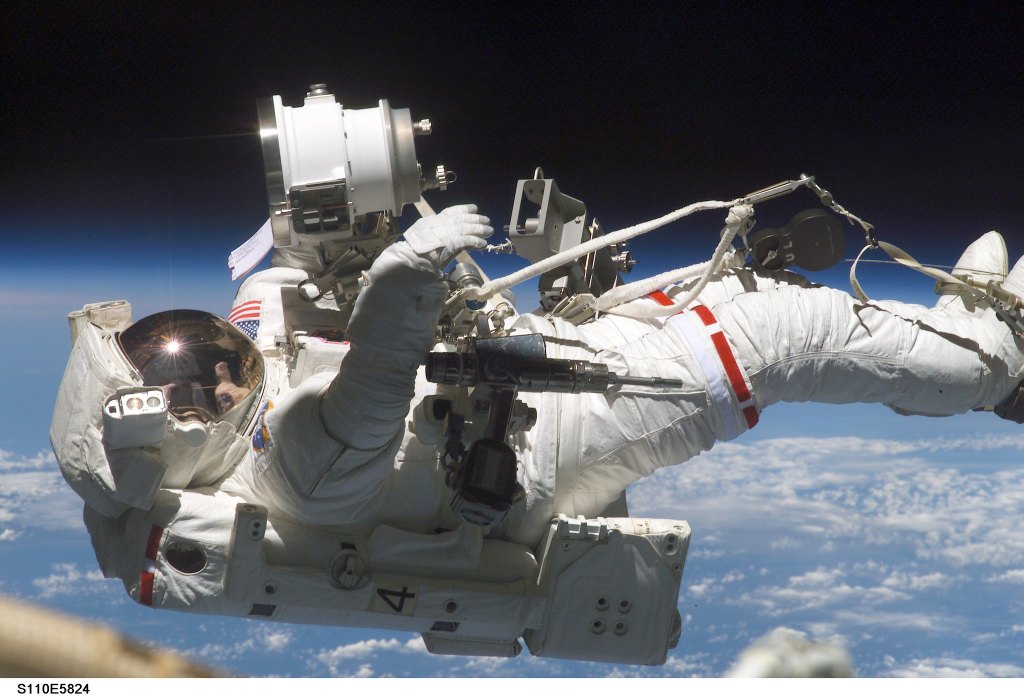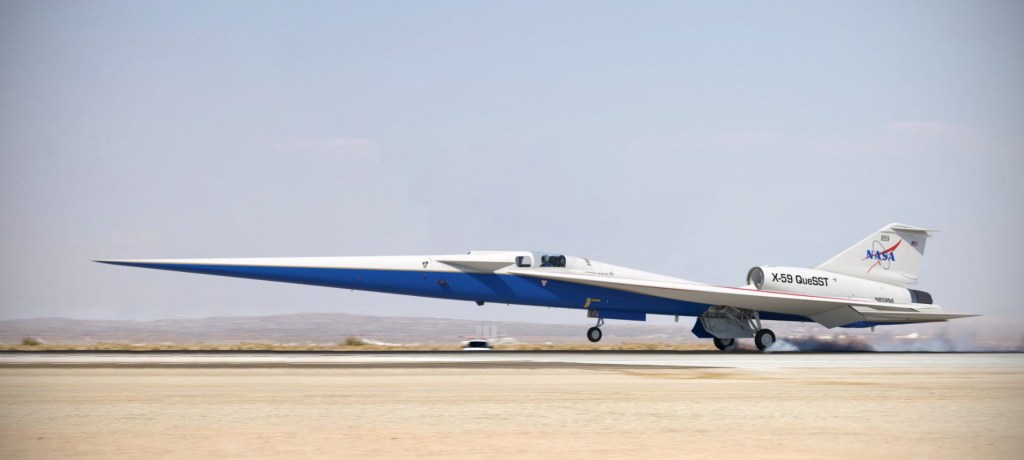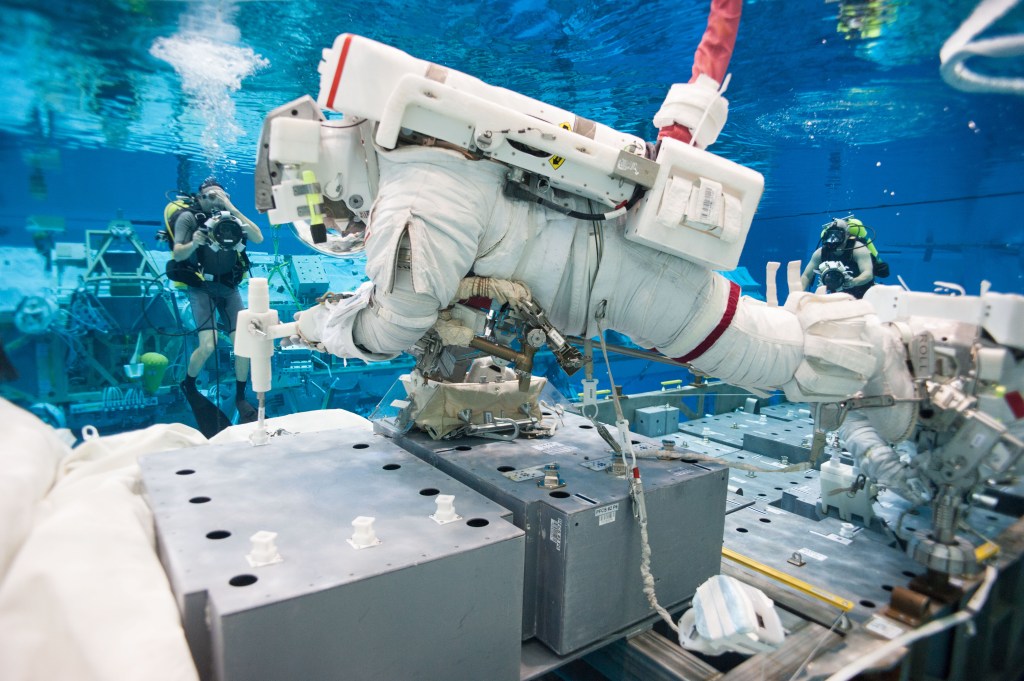Appendix A: References
Encyclopedia
Updated Feb 18, 2025

Contents
A.1 PURPOSE
This Appendix provides references to guidance documents related to this NASA Technical Standard. Reference documents may be accessed at https://standards.nasa.gov, obtained directly from the Standards Developing Body or other document distributors, obtained from information provided or linked, or by contacting the Center Library or office of primary responsibility.
The latest issuances of cited documents apply unless specific versions are designated.
A.2 REFERENCES
A.2.1 Government Documents
| Department of Defense | |
| SS521-AG-PRO-010 | U.S. Navy Diving Manual |
| MIL-HDBK-1908 | Definitions of Human Factors Terms |
| MIL-STD-1472 | Department of Defense Design Criteria Standard, Human Engineering |
| MIL-STD-1474 | Department of Defense Design Criteria Standard, Noise Limits |
| SS521-AG-PRO-010 | U.S. Navy Diving Manual |
| Federal | |
| 29 U.S.C. §1915.12(a)(2), Precautions and the order of testing before entering confined and enclosed spaces and other dangerous atmospheres, March 28, 2017 | |
| 49 CFR Part II, Parts 213 and 238, U.S. Department of Transportation (DOT) Standards, Federal Railway Administration: Vehicle/Track Interaction Safety Standards; High-Speed and High Cant Deficiency Operations; Final Rule March 13, 2013 | |
| Treaty on Principles Governing the Activities of States in the Exploration and Use of Outer Space, including the Moon and Other Celestial Bodies (UN, 1967), Article IX | |
| Centers for Disease Control and Prevention (CDC) | Perceived Exertion (Borg Rating of Perceived Exertion Scale) https://www.cdc.gov/physicalactivity/basics/measuring/exertion.htm |
| Electronic Code of Federal Regulations | 1910.146(b)(3), Permit-required confined spaces. Current through July 29, 2021 |
| Environment, Health & Safety | Biological Exposure Indices® (BEIs), sections Light and NearInfrared Radiation and Ultraviolet Radiation (2014 or later). |
| Occupational Safety and Health Administration (OSHA) |
Policy on Indoor Air Quality: Office Temperature/Humidity and Environmental Tobacco Smoke, 2003 https://www.osha.gov/laws-regs/standardinterpretations/2003-02-24 |
| OMB Circular No. A119 | Federal Participation in the Development and Use of Voluntary Consensus Standards and in Conformity Assessment Activities, as revised January 27, 2016, at Federal Register Vol. 81, No. 17, page 4673, accessible at https://www.whitehouse.gov/wp- content/uploads/2020/07/revised_circular_a-119_as_of_1_22.pdf |
| Electronic Code of Federal Regulations | 1910.146(b)(3), Permit-required confined spaces. Current through July 29, 2021 |
| The National Institute for Occupational Safety and Health (NIOSH) | Criteria For a Recommended Standard: Occupational Noise Exposure https://www.cdc.gov/niosh/docs/98-126/pdfs/98126.pdf?id=10.26616/NIOSHPUB98126 |
| World Health Organization (WHO) | Exposure Criteria, Occupational Exposure Levels https://www.who.int/occupational_health/publications/noise4.pdf |
| Environment, Health & Safety | Biological Exposure Indices® (BEIs), sections Light and NearInfrared Radiation and Ultraviolet Radiation (2014 or later). |
| Centers for Disease Control and Prevention (CDC) | Perceived Exertion (Borg Rating of Perceived Exertion Scale)https://www.cdc.gov/physicalactivity/basics/measuring/exertion.htm |
| NASA | |
| Clarke, J.M. Oxygen Toxicity (Chapter 6). The Physiology and Medicine of Diving (4th ed), Bennett, P.B., Elliott, D.H. (eds). W.B. Saunders Company Ltd: Philadelphia, 1993, pp. 153-69) | |
| Deliberations of the Exploration Atmospheres Working Group (EAWG), 2006 | |
| Human Exploration and Operations Mission Directorate (HEOMD) memo, Exploration Atmospheres, February 2013 | |
| Operational and Research Musculoskeletal Summit, August 23-25, 2005, Space Center, Houston, TX (https://ntrs.nasa.gov/api/citations/20070031573/downloads/2007 0031573.pdf) |
|
| Nutrition Requirements, Standards, and Operating Bands for Exploration Missions, December 2005. Johnson Space Center, Scott M. Smith | |
| EC-09-154 | Bue, Grant C., Lyndon B. Johnson Space Center Memorandum, Tolerable Limit for Hand Skin Temperatures in Glove Tests, November 3, 2009 |
| EHP-10028 | Extravehicular Activity and Human Surface Mobility (EHP) Exploration EVA (xEVA) System Compatibility Standards |
| JPR 1830.6 | Requirements Applicable to Personnel Participating in Diving, Hyper/Hypobaric Chambers, and Pressurized Suit Operations). Page 15, subsection 4.2: Limitations during Oxygen Breathing |
| JSC 27260 | Standard Flight Decal Catalog (https://www.nasa.gov/centers/johnson/pdf/495093main_DecalCatalog-JSC-27260-RevF.pdf) |
| JSC 27472 | Requirements for Submission of Data Needed for Toxicological Assessment of Chemicals to be Flown on Crewed Spacecraft(https://www.nasa.gov/sites/default/files/atoms/files/jsc_form_27472.pdf) |
| JSC 39116 | EMU Phase VI Glove Thermal Vacuum Test and Analysis Final Report, Doc. #CTSD-SS-1621, NASA Johnson Space Center, August 20, 1998 |
| JSC 63414 | Spacecraft Water Exposure Guidelines (SWEGs(https://www.nasa.gov/sites/default/files/atoms/files/jsc_63414_fi nal_with_signature.pdf) |
| JSC 63557 | Net Habitable Volume Verification Method |
| JSC 65995 | Commercial Human Systems Integration Processes (CHSIP) |
| JSC 65829 | Loads and Structural Dynamics Requirements for Space flight Hardware(https://ntrs.nasa.gov/api/citations/20110015359/downloads/2011 0015359.pdf) |
| JSC 66320 | Optical Property Requirements for Glasses, Ceramics, and Plastics in Spacecraft Window Systems(https://ntrs.nasa.gov/citations/20100005137) |
| JSC 67627 | Pre-Launch and Post-Landing Food Service Operational Procedures |
| JSC-CN-19414 | Assessment of Prone Positioning of Restrained, Seated Crewmembers in a Post Landing Stable 2 Orion Configuration(https://ntrs.nasa.gov/citations/20100005137) |
| JPR 1800.3 | Decompression Sickness |
| JPR 5322.1 | Contamination Control Requirements Manual |
| MSFC Form 4657 | Change Request for a NASA Engineering Standard |
| NASA/SP-6105 | NASA Systems Engineering Handbook(https://ntrs.nasa.gov/citations/20170007238) |
| NASA-STD-6016 | Standard Materials and Processes Requirements for Spacecraft |
| NASA-STD-8739 | Workmanship Standard for Crimping, Interconnecting Cables, Harnesses, and Wiring |
| NASA/TM-2007-214755 | The Apollo Medical Operations Project: Recommendations to Improve Crew Health and Performance for Future Exploration Missions and Lunar Surface Operations(https://ntrs.nasa.gov/citations/20070030109) |
| NASA/TM-2008-215198 | The Use of a Vehicle Acceleration Exposure Limit Model and a Finite Element Crash Test Dummy Model to Evaluate the Risk of Injuries during Orion Crew Module Landings(https://ntrs.nasa.gov/citations/20080018587) |
| NASA/TM-2013-217380 | Application of the Brinkley Dynamic Response Criterion to Spacecraft Transient Dynamic Events(https://ntrs.nasa.gov/citations/20170005913) |
| NASA/TM-2014-217383 | Defining NASA Risk Guidelines for Capsule-based Spacecraft Occupant Injuries Resulting from Launch, Abort, and Landing |
| NASA/TM-2020-220525 | Standard Testing Procedure for Quantifying Breathing Gas Carbon Dioxide Partial Pressure for Extravehicular Activity and Launch, Entry, Survival Pressure Suits(https://ntrs.nasa.gov/api/citations/20200002476/downloads/2020 0002476.pdf) |
| NASA/TM-20205008196 | Artemis Sustained Translational Acceleration Limits: Human Tolerance Evidence from Apollo to International Space Station(https://www.nasa.gov/sites/default/files/atoms/files/lunar_transie nt_accel_tm.pdf) |
| NASA/TM-20220011974 | Lunar Transport Vehicle Occupant Protection Requirements |
| NASA-TN-D-5153 | The Use of Pilot Rating in the Evaluation of Aircraft Handling Qualities(https://ntrs.nasa.gov/citations/19690013177) |
| NASA/TP-2014-218556 | Human Integration Design Processes (HIDP)(https://ntrs.nasa.gov/citations/20140009559) |
| NID 8715.129 | Biological Planetary Protection for Human Missions to Mars |
| NPD 8020.7 | Biological Contamination Control for Outbound and Inbound Planetary Spacecraft |
| NPR 7120.7 | NASA Information Technology Program and Project Management Requirements |
| NPR 8715.3 | NASA General Safety Program Requirements |
| SA-12-067 | Level II Johnson Space Center (JSC) Chief Medical Officer (CMO) Health and Medical Technical Authority (HMTA) Position on Potential Atmospheres for Exploration, August 8, 2012 |
| SA-16-156 | Level II JSC CMO HMTA Position on NHV and Internal Layout Considerations for Exploration Missions |
| SSP 50260 | International Space Station Medical Operations Requirements Document (MORD) |
| SSP 51721 | ISS Safety Requirements Documents: International Space Station Program (https://ntrs.nasa.gov/api/citations/20210009936/downloads/SSP %2051721-Baseline.pdf) |
| TOX-VER-2016-03 | Volatile Combustion Product Monitoring in Spacecraft |
A2.2 Non-Government Documents
| Abernethy, C.N., Plank, G.R., and Sussman, E.O. (1977). Effects of deceleration and rate of deceleration on live seated human subjects. U.S. Department of Transportation, Report No. UMTA-MA-06-004S-77-3 | |
| Balint, T. S., Cutts, J. A., Kolawa, E. A., & Peterson, C. E. (2008). Extreme environment technologies for space and terrestrial applications. Space Exploration Technologies, 6960, 36–47.https://doi.org/10.1117/12.780389 | |
| Beranek, L.L., and Vér, I.L, 1992. Noise and Vibration Control Engineering – Principals and Applications. (1992). (Eds.) pp 685-720.John Wiley and Sons | |
| Bertels, C. (2006, June 19). Crew Maintenace Lessons Learned from ISS and Considertaions for Future Manned Missions. SpaceOPs 2006 Conference. SpaceOps 2006 Conference, Rome, Italy. https://doi.org/10.2514/6.2006-5952 | |
| Biegelmeir, G. New knowledge of the impedance of the human body. Proceedings of the First International Symposium on Electrical Shock Safety Criteria. (1985) Bridges J.E., Ford, G.L., Sherman, I.A., Vainberg, M. (Eds). pp 115-132. Pergamon, New York | |
| Bloomberg, J.J., Reschke, M.F., Clément, G.R., Mulavara, A.P., Taylor, L.C. (2016). Evidence Report: Risk of Impaired Control of Spacecraft/Associated Systems and Decreased Mobility Due to Vestibular/Sensorimotor Alterations Associated with Space flight. (NASA Evidence Report). Lyndon B. Johnson Space Center. | |
| Cain, J. R. (2010). Lunar dust: The Hazard and Astronaut Exposure Risks. Earth, Moon, and Planets, 107(1), 107–125. https://doi.org/10.1007/s11038-010-9365-0 | |
| Card, S., Robertson, G., & Mackinlay, J. (1991). The information visualizer, an information workspace. CHI ’91: Proceedings of the SIGCHI Conference on Human Factors in Computing Systems, 181 –186. https://doi.org/10.1145/108844.108874 | |
| Chatterjee, I., Wu, D., and Gandhi, O. P. Human Body Impedance and Threshold Currents for Perception and Pain for Contact Hazard Analysis in the VLF-MF Band. IEEE Transactions on Biomedical Engineering, BME-33(5): 486-494, 1986 | |
| Clément G, Skinner A, Lathan C (2013) Distance and size perception in astronauts during long-duration space flight. Life 3: 524-537. https://doi.org/10.3390%2Flife3040524 | |
| Cooper, G.E., and Harper, R. P., Jr. The Use of Pilot Rating in the Evaluation of Aircraft Handling Qualities. North Atlantic Treaty Organization Advisory Group for Aerospace Research and Development (Organisation du Traite de l’Atlantique Nord). Ames Research Center, Moffett Field, CA. Cornell Aeronautical Laboratory, Buffalo, NY. April 1969 | |
| Defrin, R., Shachal-Shiffer, M., Hadgadg, M., Peretz, C. (2006). Quantitative Somatosensory Testing of Warm and Heat-Pain Thresholds: The Effect of Body Region and Testing Method. Clinical Journal of Pain, Vol 22, No.2, pp. 130-136 | |
| Edworthy, J. (1994). The design and implementation of non-verbal auditory warnings. Applied Ergonomics, 25(4), 202-210. | |
| Freiberger R. The Electrical Resistance of the Human Body to Commercial Direct and Alternating Currents. Trans. Allen Translation Service. Maplewood, New Jersey: Bell Laboratories, 1934 | |
| Gaier, J. R. (2005). The Effects of Lunar Dust on EVA Systems During the Apollo Missions (NASA Technical Memorandum NASA/TM-2005 213610). Glenn Research Center. https://history.nasa.gov/alsj/TM-2005-213610.pdf | |
| Geng, Q, et al. Cold Temperature Limit Values For Touching Cold Surfaces with the Fingertip. Ann. Occupational Hygiene, Vol. 50, No. 8, pp. 851–862, 2006 | |
| Greene, L.C., Alden, J.C., and Hardy, J.D. Adaptation to Pain. Federation Proc. 17: 60, 1958 | |
| Handbook of Acoustical Measurements and Noise Control, 3rd edition.(1997). C.M. Harris (Ed.) p. 16.8. McGraw-Hill, New York. p. 16.8 | |
| Harris, C.M., (1998). Handbook of Acoustical Measurements and Noise Control (3rd ed.). | |
| C.M. Harris (Ed.) Acoustical Society of America, Woodbury, NY. Harris (1997) | |
| Havenith, G., van de Linde, E.J.G., Heus, R. (1992). Pain, thermal sensation and cooling rates of hands while touching cold materials. European Journal of Applied Physiology; 65: 43–51 | |
| Heaton, K.W., & Lewis, S.J., 1997, “Stool form scale as a useful guide to intestinal transit time.” Scandinavian Journal of Gastroenterology, vol.32, no.9, pp.920 – 924. | |
| Hoberock, L.L. (1976). A survey of longitudinal acceleration comfort studies in ground transportation vehicles, U.S. Department of Transportation, Office of University Research, Research Report 40. | |
| Ikaheimo, T.M. (2014). The effects of temperature on human health. University of Oulu, accessible at https://www.oulu.fi/sites/default/files/content/Ikaheimo_TM_Temperature_and_human_health_28102014.pdf | |
| Infrasound and Low-Frequency Sound. Proceedings of the 2001 American Conference of Governmental Industrial Hygienists, Threshold Limit Values (TLVs). Documentation of the Threshold Limit Values for Physical Agents. ACGIH@ Worldwide. Cincinnati, OH, pp. 1-15 | |
| Kennedy Space Center Office of Safety and Mission Assurance (2015). KSC System Safety and Reliability Analysis Procedural Requirements (KNPR 8700.2 Rev. A-2). | |
| Johnson Procedural Requirements (JPR) 1830.6 (Requirements Applicable to Personnel Participating in Diving, Hyper/Hypobaric Chambers, and Pressurized Suit Operations). Page 15, subsection 4.2: Limitations during Oxygen Breathing |
|
| Lloyd-Smith, D.L., and Mendelssohn, K. (1948). Tolerance limits to radiant heat. British Medical Journal, p. 975 | |
| Meilgaard, M., Civille, G.V., and Carr, B.T. Sensory Evaluation Techniques, 3rd ed. Boca Raton, FL: CRC Press, 1999 (pages 165-166, 243) | |
| Miller, R.B. (1968). Response time in man-computer conversational transactions. Proceedings of AFIPS ’68 (fall, part 1), 267 – 277. https://doi.org/10.1145/1476589.1476628 | |
| Moritz, A.R., and Henriques, F.C. (1947). Studies in Thermal Injury II. The Relative Importance of Time and Air Surface Temperatures in the Causation of Cutaneous Burns. American Journal of Pathology, 23:695-720 | |
| Nielsen, J. (1993). Usability Engineering. Morgan Kaufmann Publishers Inc., San Francisco, CA, USA. | |
| Nielsen Norman Group (2010). Web Site Response Times https://www.nngroup.com/articles/website-response-times/ | |
| Onnasch, L, Wickens, C.D., Li, H, and Manzey, D. (2014). Human Performance Consequences of Stages and Levels of Automation: An Integrated Meta-Analysis. Human Factors Vol. 56, No. 3, pp. 476 – 488. | |
| Petitjean, A., et al. (2015). Normalization and Scaling for Human Response Corridors and Development of Injury Risk Curves. Accidental Injury: Biomechanics and Prevention. N. Yoganadan, A. Nahum and J. Melvin. New York, Springer Science+Business Media: 769-792] | |
| Provins, K.A., and Morton, R. (1960). Tactile discrimination and skin temperature. Journal of Applied Physiology; 15: 155–60 | |
| Roscoe, A.H, & Ellis, G.A. (1990). A Subjective Rating Scale for Assessing Pilot Workload in Flight: A Decade of Practical Use. Royal Aerospace Establishment, Technical Report 90019. | |
| Seppanen, O., Fisk, W.J., & Lei, Q.H. (2006). Effect of Temperature on Task Performance in Office Environment. Ernest Orlando Lawrence Berkeley National Laboratory. | |
| Stepanek, J., Blue, R.S., & Parazynski, S. (2019) Space Medicine in the Era of Civilian Spaceflight. The New England Journal of Medicine. 380;11. | |
| Taylor, R.J. Body impedance for transient high voltage currents. Proceedings of the First International Symposium on Electric Shock Safety Criteria. (1985) Bridges, J.E., Ford, G.L., Sherman, I.A., Vainberg, M. (Eds). pp 251-258. Pergamon, New York | |
| AGARD-CP-472 | Development of Acceleration Exposure Limits for Advanced Escape Systems (Brinkley, J.W.; Specker, L.J.; Armstrong, H.G.; Mosher, S.E (February 1990) |
| ASHRAE 55 | Thermal Environmental Conditions for HumancOccupancy |
| HF-STD-001B | FAA Human Factors Design Standard |
| ICDM-DMS 1.0 | International Committee on Display Measurement Metrology (ICDM), Display Measurement Standard (DMS 1.0), available from Society for Information Display (SID). www.sid.org (June 1, 2009) |
| ICES-2018-15 | Validation of Inspired Carbon Dioxide Measurement Methods in the Extravehicular Mobility Unit Spacesuit, 48th International Conference on Environmental Systems, July 2018, Albuquerque, New Mexico, Bekdash, et al. |
| ICES-2019-58 | Perry, J. The Impacts of Cabin Atmosphere Quality Standards and Control Loads on Atmosphere Revitalization Process Design. 49th International Conference on Environmental Systems. July 2019. Boston, MA |
| IEC 60601-1 | Medical Electrical Equipment – Part 1: General Requirements for Basic Safety and Essential Performance. Third Edition. International Electrotechnical Commission, Geneva, Switzerland, December, 2005 |
| ISO 2631-1:1997 | Mechanical vibration and shock |
| ISO 7731:2003(E) | Ergonomics – Danger signals for public and work areas – Auditory danger signals, method a in section 5.2.2.1 |
| ISO 9241-210:2019 | Ergonomics of human-system interaction — Part 210: Human-centered design for interactive systems |
| MIL-STD-1797A (Notice 3) |
Department of Defense Interface Standard: Flying Qualities of piloted Aircraft, 2004 |
| VESA FPDM 2.0 | Video Electronics Standards Association (VESA) Flat Panel Display Measurements (FPDM) Standard Version 2.0 (June 1, 2001), www.vesa.org |

